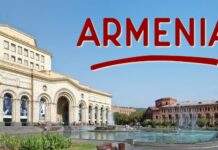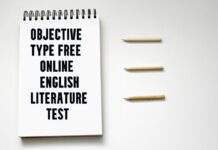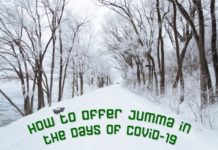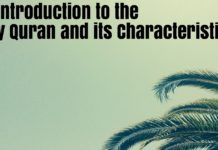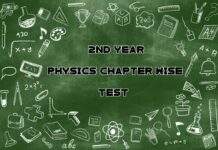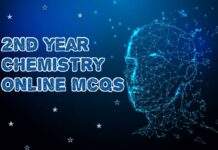Biology 2nd Year Chapter Wise Test session is available on this website. Teachers and holders of an AQ Academy can give you opportunity to download a chapter of Biology class 12 for a test session. 2nd year Biology test chapter no. 15 to chapter no. 27 is here but here I will provide you the FSC part 2 Biology test chapter for free. I will provide youOnline test facility totally free of different subjects.

CHAPTER : 15
Table of Contents
A.Q ACADEMY
TEST: Biology 2nd Year Chapter Wise Test
Q.1 Circle the Correct Answers. (6×1=6)
i Animals that do not require to adjust their internal osmotic state actively are known:
(A) Osmoregulators (B) Osmocorformers (C) Terrestrials (D) Hypertonic
ii Fresh water protozoans pump out excess water by:
(A) Contractile Vacuole (B) Food Vacuole (C) Pinocytosis (D) Phagocytosis
iii ADH affects which part of Nephron?
(A) Walls of collecting duet (B) Glamerulus (C) Walls of loop of Henle(D) Proximal convulated tubule
iv Hemodialysis means:
(A) Removing the blood (B) Clearing the blood (C) Diluting the blood (D) Storing the blood
v The hoemeostatic thermostat is present in:
(A) Pituitary (B) Hypothalamus (C) Pancreas (D) Kidney
vi In bacterial and viral infections, pathogens and leukocytes cell produce a chemical called:
(A) Pyrexia (B) Toxins (C) Afflatoxins (D) Pyrogen
Q.2 Write short answers of the following questions. (8×2=16)
i. How osmoregulation differ from excretion?
ii. Why leaves are said to be excretophores.
iii. Draw and label human Kidney.
iv. Write a short note on Kidney transplantation.
v. What are heat shock proteins?
vi. What are heterotherms? Give example.
vii. Differentiate between Shivering and Non– Shivering thermogenesis.
viii. Define panting with one example.
NOTE: Attempt the long question. (4+4=8)
Q3. (a) Discuss the nature of excretory products in different habitats.
(b) Explain working of Nephron in Human Kidney.
MCQs Ans Key
Q:1 (B) Q:2 (A) Q:3 (A) Q:4 (B) Q:5 (B) Q:6 (D)
CHAPTER : 16
TEST: Biology 2nd Year Chapter Wise Test
AQ ACADEMY
Q.1 Circle the Correct Answers. (6×1=6)
i. The sleep movements of plants fall under the category of:
(A) Growth (B) Tactic (C) Turgor (D) Tropic
ii. Which bone provide attachment site for:
(A) Compact bone (B) Spongy bone (C) Soft bone (D) Cartilage
iii. Mature bone cells are called as:
(A) Osteoblasts (B) Osteocytes (C) Osteoclasts (D) Chondrocytes
iv. There are ______ vertebrate in the neck region of mammals.
(A) 12 (B) 10 (C) 7 (D) 4
v. Joints that are held together by short fibers embedded in connective tissue:
(A) Fibrous Joints (B) Cartilaginous Joint (C) Synovial Joints (D) Hinge Joints
vi. Rickets is due to deficiency of vitamin:
(A) A (B) C (C) D (D) E
Q.2 Write short answers of the following questions. (8×2=16)
i. Differentiate between Geotropism and Hydrotropism.
ii. Define Tactic Movements. Give its one type.
iii. Differentiate between photonasty and thermonasty:
iv. Give role of Skeleton in mineral homeostasis and blood cell production.
v. Define the mechanism of hydrostatic skeleton:
vi. Name the unpaired facial bones.
vii. Enlist the various facial bones.
viii. What is the effect of exercise on muscles?
NOTE: Attempt the long question. (4+4=8)
Q 3. (a) Give importance of skeleton.
(b) Write the major evolutionary adaptation in the lines of tetrapod.
MCQs Ans Key
Q:1 (C) Q:2 (A) Q:3 (B) Q:4 (C) Q:5 (A) Q:6 (C)
CHAPTER : 17
AQ ACADEMY
TEST: Biology 2nd Year Chapter Wise Test
Q.1 Circle the Correct Answers. (6×1=6)
i. Promotes closing of Stomata under conditions of water stress:
(A) Ethene (B) Abscisic Acid (C) Gibberellins (D) Cytokinnins
ii. The hormone which inhibits root growth is:
(A) Auxins (B) Gibberellins (C) Cytokinins (D) Abscisic acid
iii. The sensation of pain is produced by:
(A) Chemoreceptors (B) Mechanoreceptors (C) Photoreceptors (D) Nociceptors
iv. In myelinated neurons, the impulse jumps from node to node and is called:
(A) Saltatory impulse (B) Nerve impulse (C) Synapse (D) Synapsis
v. The chemical waste of industry is called:
(A) Pollution (B) Effluent (C) Toxin (D) Pollutant
vi. Effective drug available for Parkinson’s disease is:
(A) Nicotine (B) GDNF (C) AZT (D) L-dopa
Q.2 Write short answers of the following questions. (8×2=16)
i. Give role of 2, 4-dichlorophenoxyacetic acid.
ii. What is meant by division of Labour?
iii. Give the functions of Hypothalamus.
iv. What is difference between Somatic nervous system and Autonomic nervous system?
v. What is Epilepsy?
vi. Give Role of Hypothalamus as Endocrine gland.
vii. Which hormones are secreted by Posterior lobe of pituitary gland?
viii. What is Secretin?
NOTE: Attempt the long question. (4+4=8)
Q 3. (a) Explain feedback mechanism. Give an example.
(b) Give general characteristics and commercial applications of Gibberellins.
MCQs Ans Key
Q:1 (B) Q:2 (D) Q:3 (D) Q:4 (A) Q:5 (B) Q:6 (D)
CHAPTER : 18
TEST: Biology 2nd Year Chapter Wise Test
AQ ACADEMY
Q.1 Circle the Correct Answers. (6×1=6)
i. Type of asexual reproduction:
(A) Fertilization (B) Vernalization (C) Apomixes (D) Photoperiodism
ii. A fluid is secreted to provide liquid medium, protection and nourishment:
(A) Corpus luteum (B) Follicle (C) Sertoli (D) Ilterus
iii. Sperms are formed in:
(A) Vas deferens (B) Collecting ducts (C) Epididymis (D) Seminiferous tubules
iv. During delivery in human, the average loss of blood is:
(A) 150cm3 (B) 250cm3 (C) 350cm3 (D) 450cm3
v. When will call embryo a fetus?
(A) After 2 months (B) after 3 months (C) After 4 months (D) After 5 months
vi. Causative agent of Genital Herpes is a:
(A) Virus (B) Bacteria (C) Fungi (D) Protozoan
Q.2 Write short answers of the following questions. (8×2=16)
i. Enlist methods of asexual reproduction.
ii. Differentiate between diploid and Haploid parthenogenesis.
iii. Differentiate between Oogenesis and Spermatogenesis.
iv. Define follicle atresia.
v. What is the role of oxytocin in labour?
vi. What are test tube babies?
vii. What is Gonorrhea?
viii. What is the cause and effect of syphilis?
NOTE: Attempt the long question. (4+4=8)
Q3. (a) Describe the human female reproductive cycle.
(b) Explain sexually transmitted disease in human.
MCQs Ans Key
Q:1 (C) Q:2 (C) Q:3 (D) Q:4 (C) Q:5 (B) Q:6 (A)
CHAPTER : 19
AQ ACADEMY
TEST: Biology 2nd Year Chapter Wise Test
Q.1 Circle the Correct Answers. (6×1=6)
i. During elongation, the cell volume increase upto:
(A) 50 fold (B) 100 fold (C) 150 fold (D) 200 fold
ii. Intercalary meristems are situated at:
(A) Root Apex (B) Shoot Apex (C) Base of Internode (D) Top of Internode
iii. The removal of apex releases that Lateral buds from the apical dominance. It is called:
(A) Inhibitory effect (B) Compensatory effect (C) Apical dominance (D) Reproduction
iv. Immediately after fertilization, the egg undergoes a series of mitotic divisions called:
(A) Morulla (B) Gastrulaion (C) Cleavage (D) Blastula
v. Hatching period of chick is:
(A) 15 days (B) 18 days (C) 21 days (D) 28 days
vi. Gray equatorial cytoplasm gives rise to _______:
(A) Epidermis (B) Muscle Cells (C) Notochord & Neural tube (D) Gut
Q.2 Write short answers of the following questions. (8×2=16)
i. Differentiate between growth and development.
ii. Define differentiation and Maturation.
iii. Define growth correlations.
iv. Define Apical dominance.
v. Differentiate between Inhibitory and compensatory effect.
vi. Name two layers of lateral plate of mesoderms.
vii. Write down the names of different kinds of cytoplasm with their functions.
viii. Write regeneration in invertebrate animals.
NOTE: Attempt the long question. (4+4=8)
Q3. (a) Define teratology. Discuss various types of abnormalities in development.
(b) Write a note on Neurulation in Chick Embryo.
MCQs Ans Key
Q:1 (C) Q:2 (C) Q:3 (B) Q:4 (C) Q:5 (C) Q:6 (C)
CHAPTER : 20
TEST: Biology 2nd Year Chapter Wise Test AQ ACADEMY
Q.1 Circle the Correct Answers. (6×1=6)
i. V-shaped chromosomes are called:
(A) Acrocentric (B) Telocentric (C) Metacentric (D) Submetacentric
ii. The stand which elongates towards the replication fork is:
(A) Leading (B) Lagging (C) Okazaki (D) Primer
iii. Which one of the following is initiation codon:
(A) AUG (B) GUA (C) UGA (D) GAC
iv. The genetic code for glycine is:
(A) UAG (B) GAU (C) GUA (D) GGU
v. Which of the following is a non sense codon?
(A) UGA (B) UGG (C) AUG (D) AUC
vi. This condition appears as a result of point mutation:
(A) Down Syndrome (B) Turner Syndrome (C) Klinefelter Syndrome (D) Sickel cell Anaemia
Q.2 Write short answers of the following questions. (8×2=16)
i. What is nucleosome?
ii. Name important enzymes involved in DNA replication.
iii. What is Sickel Cell Anemia?
iv. How mRNA in eukaryotic cells remain protected from nucleases and phosphatases?
v. Define Central Dogma.
vi. Write a note on three types of RNA.
vii. Give function of RNA polymerase in transcription.
viii. Define Point mutation.
NOTE: Attempt the long question. (4+4=8)
Q3. (a)Explain Meselson – Stahl experiment.
(b) Explain Experiment of Beadle and Tatum on Neurospora.
MCQs Ans Key
Q:1 (C) Q:2 (A) Q:3 (A) Q:4 (D) Q:5 (A) Q:6 (D)


CHAPTER : 21
TEST: Biology 2nd Year Chapter Wise Test AQ ACADEMY
Q.1 Circle the Correct Answers. (6×1=6)
i. During cell division, the nuclear division is called:
(A) Cytokinesis (B) Karyokinesis (C) Karyotype (D) Plasmolysis
ii. Which one is absent in animal cells?
(A) Spindle (B) Centriole (C) Chromatids (D) Phragmoplast
iii. Mitosis is divided into.
(A) karyokinesis (B) cytokinesis (C) interphase (D) both a and b
iv. The phase in Meiosis I which last for days, weeks or even years is:
(A) Leptotene (B) Zygotene (C) Pachytene (D) Diplotene
v. Crossing over occurs during:
(A) Diplotene (B) Pachytene (C) Zygotene (D) Leptotene
vi. In which stage of Meiosis, the paired chromosomes repel each other and begin to separate:
(A) Leptotene (B) Zygotene (C) Diplotene (D) Pachytene
Q.2 Write short answers of the following questions. (8×2=16)
i. What is interphase? Write the names of its substages.
ii. What is Kinetochore?
iii. How do karyokinesis and cytokinesis phases of cell division differ?
iv. What are the main features of metaphase-I of meiosis?
v. How meiosis plays its role in producing genetic variations?
vi. Define crossing over. Give its importance.
vii. Describe causes and symptoms of Down’s syndrome.
viii. Give symptoms of Turner’s syndrome.
NOTE: Attempt the long question. (4+4=8)
Q3. (a) Describe Prophase-I of meiosis in detail.
(b) How does cytokinesis occur in animals cells? In which way does it differ from that in plant cell?
MCQs Ans Key
Q:1 (B) Q:2 (D) Q:3 (D) Q:4 (C) Q:5 (B) Q:6 (C)
CHAPTER : 22
TEST: BIOLOGY –2nd Year AQ ACADEMY
Q.1 Circle the Correct Answers. (6×1=6)
i. When a heterozygote exceeds the phenotypic expression of both the homozygetes the phenomenon is called:
(A) over-dominance (B) incomplete dominance (C) co-dominance (D) All of these
ii. RH Blood group system is named after its:
(A) Discoverer (B) Rhesus monkey (C) A Patient (D) Rhinoceros
iii. Secretor gene Se is present on chromosome number:
(A) 11 (B) 19 (C) 21 (D) 23
iv. The gene that triggers developmental process towards maleness is:
(A) TFM (B) SRY (C) MODY (D) BOB
v. Green colour blindness is called:
(A) Deuteranopia (B) Protanopia (C) Tritanopia (D) Colour blind
vi. Which of these traits zigzags from maternal grand father through a carrier daughter to a grandson?
(A) autosomal (B) X -linked (C) Y – linked (D) X and Y linked
Q.2 Write short answers of the following questions. (8×2=16)
i. Compare Monohybrids and Dihybrids.
ii. Differentiate between complete and over dominance.
iii. What is incomplete dominance?
iv. Differentiate between linkage and linkage group.
v. Write formula to calculate recombination frequeny.
vi. What do you know about protanopia and tritanopia?
vii. What is the risk of colour-blind child in family when father is colour-blind but mother is normal?
viii. How is blood pressure a multifactorial trait?
NOTE: Attempt the long question. (4+4=8)
Q3. (a) Discuss the genetics of Colour Blindness.
(b) Define Multiple Alleles. Explain it with ABO blood group system of man.
MCQs Ans Key
Q:1 (A) Q:2 (B) Q:3 (B) Q:4 (B) Q:5 (A) Q:6 (B)
CHAPTER : 23
TEST: BIOLOGY –II Year AQ ACADEMY
Q.1 Circle the Correct Answers. (6×1=6)
i. The enzymes which are used to cut out the gene of interest are known as:
(A) DNA ligase (B) DNA polymerase (C) RNA polymerase (D) Restriction Endonuclease
ii. The two different pieces of DNA joined together, is called as:
(A) Dimeric DNA (B) Chimaeric DNA (C) Trimeric DNA (D) Tetrameric DNA
iii. Eco R1 is a commoxly used:
(A) Gene (B) Restriction Enzyme (C) Bacteriophage (D) Bacteria
iv. A full set of genes of an individual is called:
(A) Genome (B) Genotype (C) Karyotype (D) Dominance
v. Persons with huntington’s disease have a unique site where a restriction enzyme cuts:
(A) DNA (B) RNA (C) Lipids (D) Proteins
vi. Transgenic bacteria are produced in large vats called:
(A) transducer (B) bioreactor (C) biomultiplier (D) culter media
Q.2 Write short answers of the following questions. (8×2=16)
i. What is genetic Engineering?
ii. Why biotechnology is important for human beings?
iii. What is genomic library?
iv. Define Bioreactors.
v. Discuss any two benefits of transgenic bacteria to promote health of plants.
vi. What is cystic Fibrosis?
vii. How hyper cholesterolemia can be cured by gene therapy?
viii. Define Hybridization.
NOTE: Attempt the long question. (4+4=8)
Q3. (a) What is the polymerase chain reaction (PCR), and how is it carried out to produce multiple copies of a DNA segment?
(b) For what purpose have bacteria, plants and animals been genetically altered?
MCQs Ans Key
Q:1 (D) Q:2 (B) Q:3 (B) Q:4 (A) Q:5 (A) Q:6 (B)
CHAPTER : 24
TEST: BIOLOGY 2nd Year AQ ACADEMY
Q.1 Circle the Correct Answers. (6×1=6)
i. The first photosynthetic organisms used ______ as source of hydrogen for reducing carbon dioxide to sugars.
(A) H2S (B) H2 (C) S (D) CO2
ii. Darwin’s origin of species was published in:
(A) 1840 (B) 1859 (C) 1865 (D) 1890
iii. Tubes that connect the middle ear with the throat in humans are called:
(A) Eustachian tube (B) Neural tube (C) Fallopian tube (D) Nephridial tube
iv. Which one is not a vestigial organ of human being?
(A) appendix (B) coccyx (C) nictitating membrane (D) eye lid
v. Level of classification between species and family is called _____.
(A) Family (B) species (C) Genus (D) order
vi. Hardy – Weinberg’s theorem describes the frequencies of genotype of non-evoluving:
(A) Family (B) Population (C) Species (D) Community
Q.2 Write short answers of the following questions. (8×2=16)
i. What are hydrothermal vents?
ii. What are hydrothermal vents?
iii. Describe the term of Biogeography.
iv. Differentiate between Homologous and Analogous organs.
v. Explain the term homology with a suitable example.
vi. How artificial selection is different from natural selection?
vii. Give the importance of population genetics in evolution.
viii. Differentiate between population and Gene pool.
NOTE: Attempt the long question. (4+4=8)
Q3. (a) Define gene frequency. Describe factors affecting Gene frequency.
(b) Write Darwin’s theory of evolution.
MCQs Ans Key
Q:1 (A) Q:2 (B) Q:3 (A) Q:4 (D) Q:5 (C) Q:6 (B)
CHAPTER : 25
TEST: BIOLOGY –II Year AQ ACADEMY
Q.1 Circle the Correct Answers. (6×1=6)
i. The whole of the world land is called:
(A) Lithosphere (B) Ecosphere (C) Hygrosphere (D) Biosphere
ii. The basic functional unit of ecology is:
(A) Niche (B) Population (C) HygrosphereEcosystem (D) Community
iii. The bacteria in the root nodules fix nitrogen and convert it into:
(A) Nitrate (B) Nitrite (C) Amino Acid (D) Ammonia
iv. In root nodules, the organisms present are:
(A) Bacteria (B) Cyanobacteria (C) Algae (D) Fungi
v. The process in which microorganisms use the proteins and amino acids and release ammonia or ammonium ions is known as:
(A) Nitrification (B) Ammonification (C) Denitrification (D) Assimilation
vi. The macronutrient in biogeochemical cycle is:
(A) Iron (B) Calcium (C) Zinc (D) Iodine
Q.2 Write short answers of the following questions. (8×2=16)
i. Differentiate between Ectoparasite and Endoparasite.
ii. Define parasitism. Give at least one example.
iii. What is Symbiosis? Give one example.
iv. What is Commensalism? Give example.
v. Differentiate between macronutrients and micronutrients.
vi. Differentiate between Nitrification and denitrification.
vii. Write name and role of nitrifying bacteria.
viii. Sketch three main steps in nitrogen cycle?
NOTE: Attempt the long question. (4+4=8)
Q3. (a)Explain the biotic components of ecosystem.
(b) Explain Food Web with diagram.
MCQs Ans Key
Q:1 (A) Q:2 (C) Q:3 (C) Q:4 (A) Q:5 (C) Q:6 (B)
CHAPTER : 26
TEST: BIOLOGY –II Year AQ ACADEMY
Q.1 Circle the Correct Answers. (6×1=6)
i. In aquatic ecosystem, near shore zone is called:
(A) Littoral zone (B) Limnetic zone (C) Profundal zone (D) Benthic zone
ii. Drifting or floating microscopic organisms are called:
(A) Phytoplanktons (B) Zooplanktons (C) Planktons (D) Photons
iii. The average rainfall in temperate deciduous forest is between:
(A) 600-1500 mm (B) 650-1500 mm (C) 700-1500 mm (D) 750-1500 mm
iv. Andropogon, Stipa and Panicum are found in ecosystem called:
(A) Grass land (B) Desert (C) Tundra (D) Coniferous
v. Which one is not Desert:
(A) Thal (B) Thar (C) Sahara (D) Taiga
vi. In which type of ecosystem is the smallest fraction of nutrients present in soil:
(A) Forest (B) Savanna (C) Grass Land (D) Desert
Q.2 Write short answers of the following questions. (8×2=16)
i. Name four factors which influence life on land.
ii. Differentiate between Alpine and Boreal forests.
iii. Describe briefly human impact on grass land Ecosystem.
iv. Give productivity in sub humid tropical grass land.
v. Name predators of grassland.
vi. Differentiate between praries and savanna.
vii. Where is desert ecosystem located in Pakistan?
viii. How animals and plants conserve water in terrestrial environment?
NOTE: Attempt the long question. (4+4=8)
Q3. (a) Where is life in oceans (hydrosphere ecosystem) most abundant and why?
(b) Discuss life in fresh water Lakes.
MCQs Ans Key
Q:1 (A) Q:2 (A) Q:3 (D) Q:4 (A) Q:5 (D) Q:6 (D)
CHAPTER : 27
TEST: BIOLOGY –II Year AQ ACADEMY
Q.1 Circle the Correct Answers. (6×1=6)
i. The upper weathered layer of earth crust is:
(A) Rock (B) Soil (C) Sandy (D) Rhizome
ii. Agriculture was started some years ago:
(A) 40,000 (B) 30,000 (C) 20,000 (D) 10,000
iii. Establishment of new forests, where no forests existed before is called:
(A) Deforestation (B) Desertification (C) Reforestation (D) Afforestation
iv. The percentage of land under cultivation is:
(A) 30% (B) 21% (C) 11% (D) 5%
v. Ozone depletion is commonly caused by:
(A) CFCs (B) CO2 (C) Smoke (D) Smog
vi. The two main causes of air pollution are industrialization and:
(A) Automobiles (B) Urbanization (C) Deforestation (D) Overgrazing
Q.2 Write short answers of the following questions. (8×2=16)
i. What are solid wastes?
ii. How exhaustible resources are different from inexhaustible resources?
iii. What are Effluents?
iv. Define pollutants. Name two pollutants.
v. What is stone cancer?
vi. Differentiate pollution from pollutant.
vii. Explain the human role for global warming.
viii. What is water pollution?
NOTE: Attempt the long question. (4+4=8)
Q3. (a) Write down a comprehensive note on ozone layer and ozone layer depletion.
(b) Define Pollution. Explain about the water pollution.
MCQs Ans Key
Q:1 (B) Q:2 (D) Q:3 (D) Q:4 (C) Q:5 (A) Q:6 (C)
Most Important Short Questions Of 10th Physics 2022
Active Voice And Passive Voice



